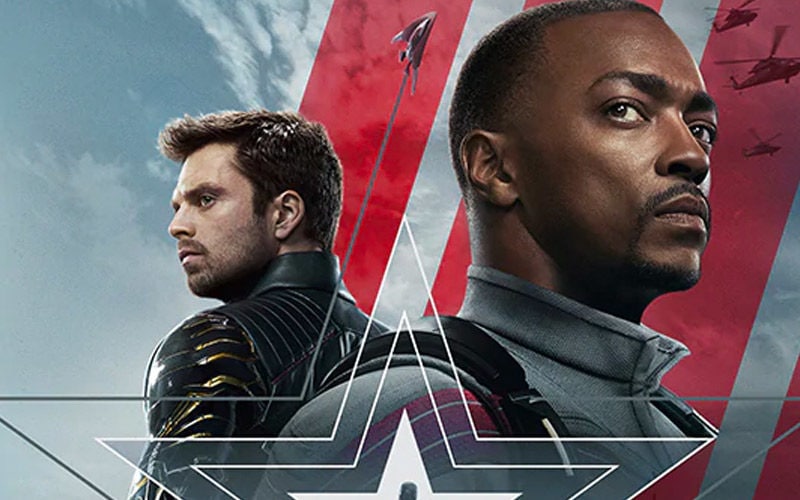‘The Falcon and the Winter Soldier’ Review: Compassionate Society that Kicks Ass

Spoilers Below
The Falcon and the Winter Soldier miniseries, created by Malcolm Spellman and directed by Kari Skogland, perfectly blends social justice with the Marvel Cinematic Universe.
The miniseries is not as stylistically revolutionary as WandaVision, but it also charts significant character shifts for the two main characters. Bucky Barnes heals from the PTSD he has suffered from due to his years as an assassin, and Sam Wilson wrestles with what it means for a Black man to carry the shield and embraces his new role as Captain America. The Falcon and the Winter Soldier is the perfect MCU television show for the times we are currently in with the Black Lives Matter Movement.
The only issue I have with the miniseries is that it feels like I’m watching a multi-episode MCU movie instead of something revolutionary like WandaVision. There is a lot of action and fast-paced edits. The only real difference between the show and the MCU movies is that The Falcon and Winter Soldier spend some time dealing with domestic storylines. The villains are more multi-faceted. We spend a lot of time getting to know Karli Morgenthau’s belief system and her reasons for forming The Flag Smashers. I even felt sympathy for Karli when Sharon finally kills her.
The director of WandaVision, Matt Shakman, said that Disney Plus was initially planning to release The Falcon and the Winter Soldier before WandaVision. It was supposed to act as a transitional show taking the MCU from the silver screen to the digital realm. However, the pandemic paused the production, so Spellman’s miniseries had to move its release date further down the line. I think The Falcon and the Winter Soldier’s episodes being released during the George Floyd case makes a lot more sense, so I think the timing worked out well.
Sam Wilson’s story arc is the most vital part of the series because there is real character growth and a gratifying ending. At the start of the series, Sam feels uncomfortable even looking at the Captain America shield. He donates the shield to the Smithsonian for an exhibit honoring his best friend, Steve Rogers. He is still the Falcon but working as a military contractor overseas. A case involving the Flag-Smashers, a terrorist group against returning to the Pre-Blip world, catches his eye. Sam is horrified when he realizes the government replaced his friend with a White, blue-eyed stranger named John Walker.
Sam meets Isaiah Bradley, the second American super-soldier, locked up by the United States military for experimentation because he is a Black man. Sam doesn’t feel comfortable with Walker as Captain America but can’t imagine wearing the symbol of a country that always treats him as a second-class citizen. As a Black man, Sam feels conflicted.
Even back home in Louisiana, Sam has to deal with the racism from a loan officer who refuses to help him and his sister Sarah save their family’s commercial fishing boat. Even using “The Falcon” moniker doesn’t give Sam the leverage to receive the loan. The loan officer wants some pictures with Sam and freaks out over meeting an Avenger but can’t allow a Black family to have the tools to save their business.
Sam’s time trying to stop the Flag-Smashers and attempting to break through to the revolutionary Karli gives him time to realize that he has what it takes to be Captain America. Captain America represents protection, compassion, and the ability to speak truth to power, so the United States can indeed be the country where everybody has equal opportunity to thrive. Sam morphs into his version of Captain America and opens the eyes of the Global Repatriation Council. The council realizes that they have the power to see the issues through the eyes of the ninety-nine percent of the population who are suffering and not just go with the easiest choice of sending everybody back to their original countries. The people left behind in the “Blip” don’t need to suffer to elevate those who were gone for five years.
Bucky, the Winter Soldier, finally deals with his trauma and guilt from being an assassin when both Sokovian Terrorist Helmut Zemo and Hydra brainwashed him. At the start of The Falcon and the Winter Soldier, Bucky is at his lowest point. He has nothing but his guilt to sit with. There are no wars to fight. Bucky can’t sleep anywhere but on the floor. Even on the floor, he has nightmares. The Winter Soldier is lying to his therapist about how he is trying to redeem himself. He uses spycraft and violence to bring everybody involved in Hydra to justice instead of finding redemption by helping those who he hurt.
Bucky befriends one of the victim’s fathers, Yori, but doesn’t mention anything about his son RJ Nakajima. Bucky selfishly doesn’t want to lose one of his few friends.
When Bucky sees John holding the Captain America Shield, he is angry with Sam. He can’t understand how conflicted Sam is over becoming Captain America. Bucky’s reluctant team up with The Falcon allows him to ignore his issues temporarily. But even then, the Winter Soldier has to face his past because they need Zemo’s assistance to hunt down the Flag-Smashers.
During the last episode, Sam counsels Bucky. The Winter Soldier realizes he needs to give closure to one of his victims instead of trying to make himself feel better by punishing his enemies. Bucky sleeps through the night for the first time and visits Yori. He tells the father that he killed RJ as the Winter Soldier. Bucky loses his friend but gives Yori the closure he has been waiting for for years.
I would recommend The Falcon and the Winter Soldier to anybody whose an MCU fan and embraces the concept of seeing “A” heroes who reflect the social issues and represent the diverse world we live in.


I agree 100%!